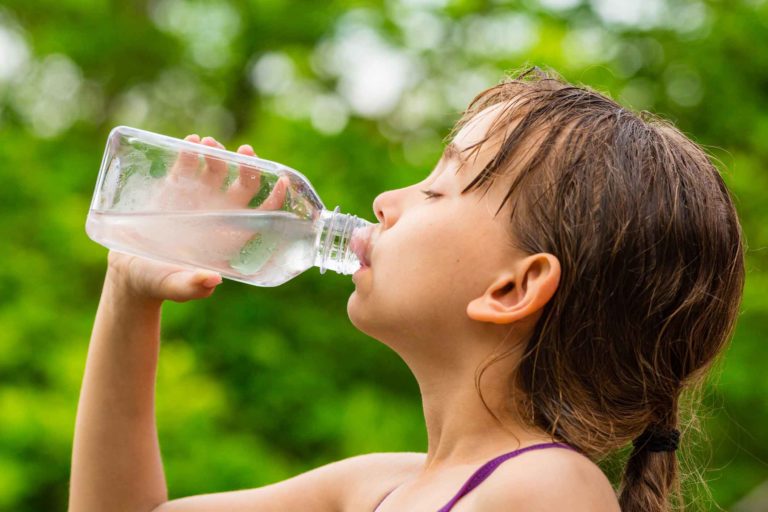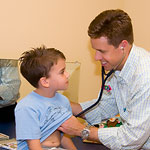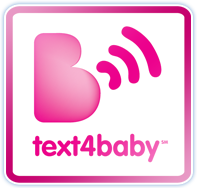
When it’s warm and sunny outside, you’ll often see reminders everywhere to protect your children from sunburn. Everyone from doctors to billboards seem to list sun-care tips, such as covering up exposed skin, wearing sunscreen, and wearing hats and sunglasses. However, parents should also take a moment to prevent another common risk of being outside when it’s warm and sunny – heat injury and dehydration.
What Are Dehydration and Heat Stroke?
It’s normal to lose body water – we all do so daily through sweat, tears, saliva, breathing, and urine. Under the right circumstances, our bodies replace this water when we eat and drink. However, when you continually expose your body to the sun, excessive amounts of body water are lost through sweat – particularly during physical activity. If you are also not drinking water during this time, dehydration can set in, depleting the body of water and electrolytes, such as sodium and potassium.
Untreated dehydration can lead to worse forms of heat related illness. Heat cramps – painful cramping in the legs and arms – can result from continued lack of body water and salts. Heat exhaustion can eventually become heat stroke, a condition characterized by a temperature of at least 104 degrees, coupled with vomiting, seizures, disorientation, shortness of breath, and unconsciousness. While parents or first responders can treat dehydration, heat cramps, and heat exhaustion, heat stroke is an emergency that hospitals need to address.
Kids face an increased risk for dehydration compared with their adult counterparts. First, their body surface area makes up a larger proportion of their overall weight, leading to a greater risk for depletion of body water. Second, children are often much less aware of the need for proper hydration. For these reasons, it is important that you ensure your child adequately hydrates before, during, and after physical activity, especially if it occurs outside in warm weather.
How Can You Prevent Dehydration?
Experts recommend having your child drink cool water before going out to play so they are hydrated before activity even begins. Then, during activity, you should continue to insist your child drink water – the American Academy of Pediatrics recommends at least 5 ounces for a child that is 88 pounds. Ensure your child is receiving adequate break periods inside or in the shade, in order to bring body temperature back down.
If you notice your child becoming flushed but not sweaty, or acting disoriented, dizzy, or complaining of head or limb aches, remove the child from the sun, and get to a cool place as soon as possible. Let the child drink cool fluids and take off excess clothing, and administer cool, wet cloths to the overheated skin.
If the above steps do not help, or if the child vomits, loses consciousness, or has a seizure, it is important that you seek medical treatment as soon as possible, as heat stroke is always an emergency.
The information and content on our website should not be used as a substitute for medical treatment or advice from your doctor.




